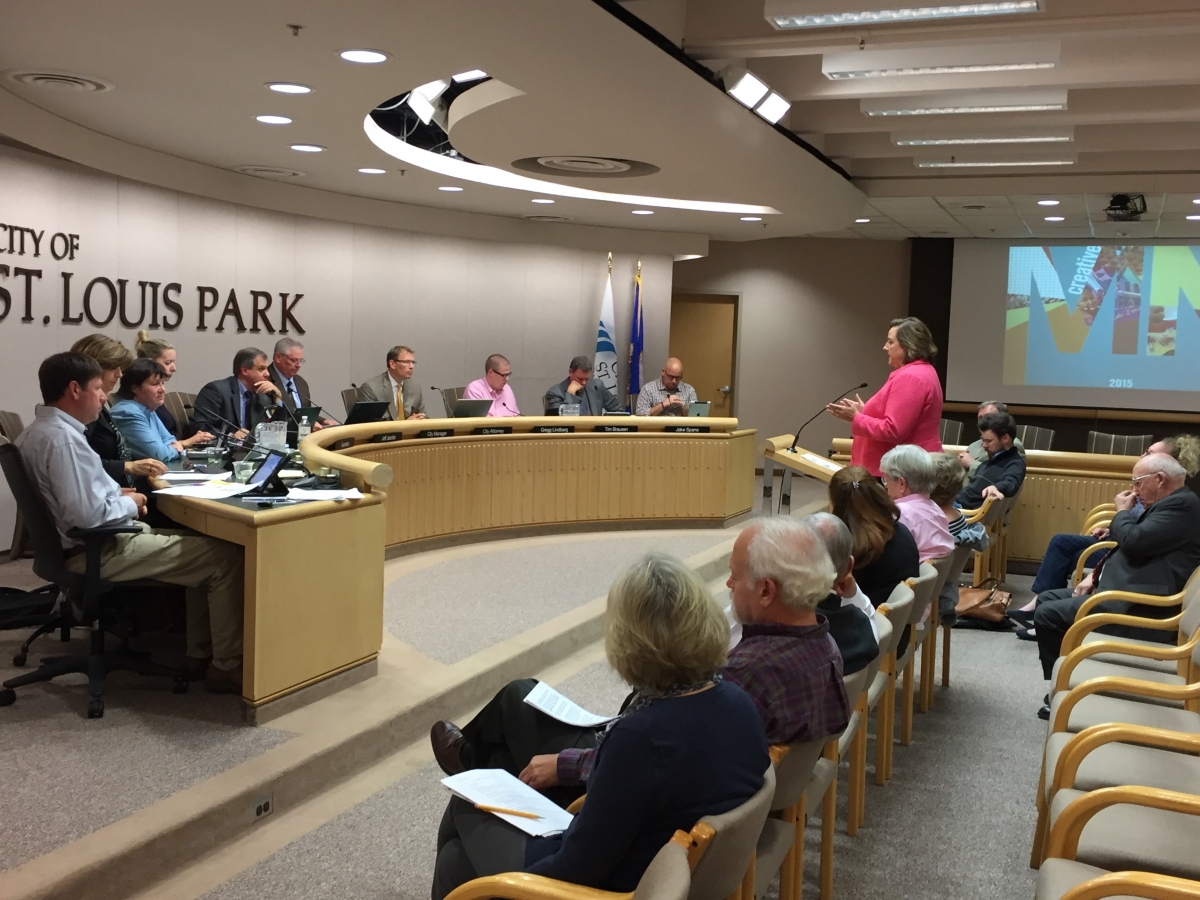The Circle of Leadership
Posted by Sep 28, 2018

Ms. Sheila M. Smith
What does it mean to lead a statewide arts advocacy organization? When faced with a big challenge at the legislature I get to yell “Once more into the breach, my friends!” and lead the charge as we inundate legislators with calls, letters, and visits. But in order to be ready for that, the everyday leadership of a huge, statewide arts community is less a battle charge and more of a circle or a forward spiral, going out to gather people and ideas, bringing them back to the organization, re-aligning, and then going out again.
As a statewide organization, Minnesota Citizens for the Arts needs to serve artists, arts organizations, and arts audiences in every corner of our large state. If I drive diagonally across the state from the Canada/North Dakota corner to the Iowa/Wisconsin corner, it will take me eight and a half hours. On the East Coast, this same amount of time would take you from Boston, Mass. to Fredericksburg, Virginia, passing through 9 states including Massachusetts, Connecticut, Rhode Island, New York, New Jersey, Pennsylvania, Maryland, Delaware, and Virginia as well as Washington, DC.
Serving such a large geography means I travel the state as much as possible to serve our constituents and to gather the information we need to be effective. In the last six months I’ve driven over 9,000 miles across the state to meet with artists, arts organizations, and elected officials to talk about the importance of the arts to Minnesota and how we can work together to support artists and the organizations that work with and represent them. This forges links in a chain of relationships that webs together and strengthens our networks. I bring what I learn in those communities back to our organization to help inform our work, and then I hit the road again, completing the circle. Having done this work for 22 years, I estimate I’ve driven over 180,000 miles across the state.

It is important to meet with people face to face to build relationships and trust. You can’t be effective in advocacy unless you are constantly engaging a large network of people who help you understand how their world works, and how your work impacts and helps them. (Sitting in your office sending out emails and posting on social media won’t help you build those relationships, but those actions have their place when you need to move fast. They can give people a quick heads up about what’s happening at the legislature or Congress and get them to take action).
The need to meet with people in-person creates tension in a statewide board, given that many members have to drive five or six hours just to attend a meeting. Can we build the relationships and trust we need to be effective if we only meet by phone or online? Getting together in person can really be a pain in the ass for some of our members, but the relationships they make on our statewide board have flowered into collaborations across the state that have helped build the interconnected fabric of our arts community. They, too, are building a leadership circle, connecting each other back to their communities.
In Minnesota, this work to bring the arts community together has been very effective. In 2008, our community succeeded in passing the Legacy Amendment, which is having its 10th Anniversary this year. We will be celebrating a decade of successes and impact of Legacy arts investments across the state. Cities and counties have begun to include the arts in their economic development plans, forming new arts commissions, collaborating with artists in large and small ways, and looking for ways to make their communities more attractive to young families.
It’s easy to think that good art only exists in big cities, or that only people who have graduated with an arts degree qualify to be artists. In my travels across Minnesota I’ve seen something else—that creativity is thriving in every corner of the state, in communities of all kinds, and that people of all kinds love to be creative in their own lives in a multitude of ways. We have woodcarvers and quilters in addition to fine art painters of all skill levels. We have bluegrass circles and beer choirs in addition to professional opera singers. We have Suzuki classes of elementary students playing tiny violins and we have the greatest classical musicians in the world.
The work of leadership in such a kaleidoscope of interests lies in learning as much as possible about every constituency, identifying common interests, and helping everyone work together to achieve those goals. The ever-widening spiral of learning and leading takes all of us forward together.
Read more blogs on why Nonprofit Arts Women Rock!





